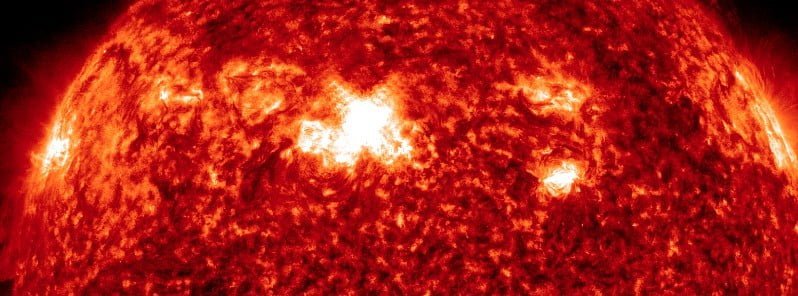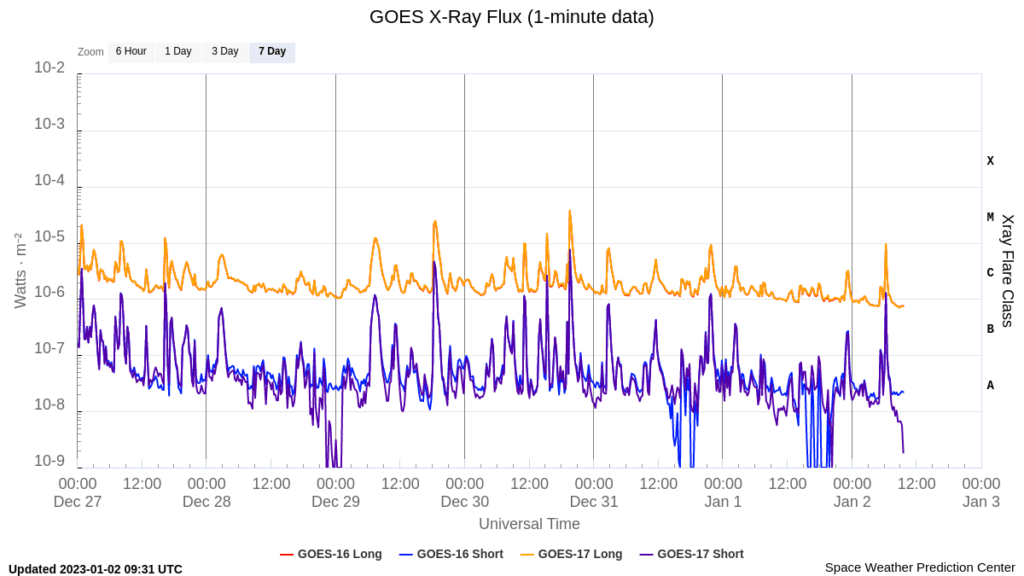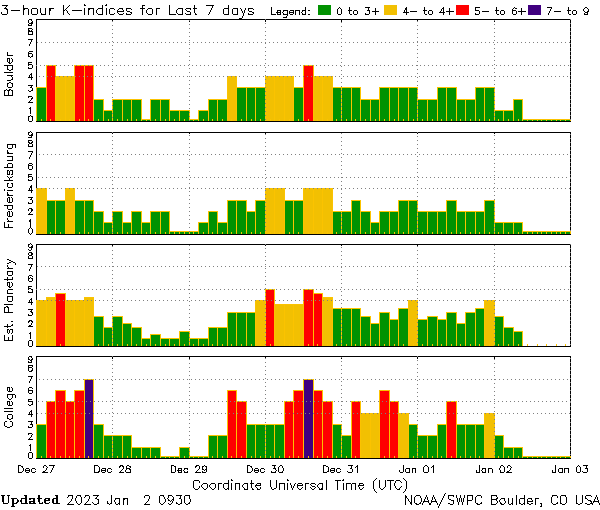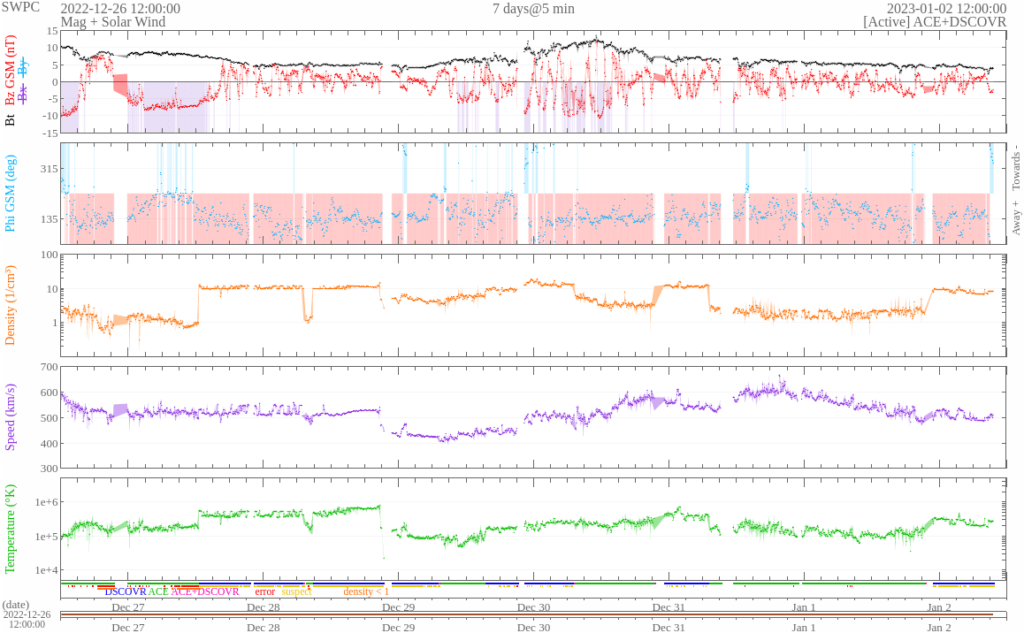Geomagnetic storms likely on January 4 and 5 due to the combined effects of a CME and CH HSS

Geomagnetic storms reaching G1 – Minor levels are likely on January 4 and 5, 2023 due to combined effects of a coronal mass ejection (CME) that left the Sun on December 30 and coronal hole high speed stream (CH HSS) effects. Solar activity is expected to be at low levels, with a chance for M-class flares through January 28.
Solar activity was at low to moderate levels from December 26, 2022, to January 1, 2023.1
The largest flare of the period was an M3.7 that erupted from Region 3176 at 19:38 UTC on December 31.
Associated with flare M-flare activity on December 30 from Region 3176 was an EIT wave, visible in SUVI 195 imagery around 15:28 UTC on December 30, and a CME signature in subsequent STEREO-A COR2 coronagraph imagery around 16:53 UTC. Analysis and modeling of the event suggested onset on January 4.
Other significant regions that produced low-level M-flare activity during the period were Region 3169 (N22, L=117, class/area=Fkc/490 on December 27) and Region 3180 (N19, L=309, class/area=Dso/220 on January 1).
No other CMEs were determined to be Earth-directed from available coronagraph imagery.

The other remaining 11 numbered active regions observed during the reporting period were either quiet or only produced C-class activity.
No proton events were observed at geosynchronous orbit.
The greater than 2 MeV electron flux at geosynchronous orbit reached high levels from December 26 to January 1.
The highest flux observed was 3 680 pfu at 15:10 UTC on December 30.
Geomagnetic field activity ranged from quiet to G1 – Minor geomagnetic storm levels.
The arrival of a CME that left the Sun on December 24 combined with positive polarity CH HSS influence caused G1 conditions on December 26 and 27.
Solar wind speeds during that time ranged between 500 – 600 km/s.
Quiet to unsettled conditions were observed on December 28 and through most of December 29.
At the end of December 29, a co-rotating interaction region (CIR) ahead of another positive polarity CH HSS caused conditions to again increase to G1 conditions on December 30.
Under the influence of the coronal hole, wind speeds increased to between 500 – 600 km/s through the remainder of the reporting period.
As total magnetic field strength dropped from a peak of 12 nT on December 30 to between 4 – 7 nt over December 21 and January 1, geomagnetic conditions responded with quiet to active conditions.


Forecast of solar and geomagnetic activity from January 2 – 28, 2023
Solar activity is expected to be at low levels, with a chance for M-class flares, through the outlook period due to multiple M-class flare (R1-Minor) producing regions both on the visible disk and regions on the farside that are due to rotate back onto the disk.
No proton events are expected at geosynchronous orbit.
The greater than 2 MeV electron flux at geosynchronous orbit is expected to reach high levels on January 2 -3, January 5 – 9 and 20 – 28. The remainder of the outlook period is likely to be at normal to moderate levels.
Geomagnetic field activity is expected to range from quiet to G1 – Minor geomagnetic storm conditions.
G1 conditions are likely on January 4 and 5 due to the combined effects of a CME that left the Sun on December 30 and coronal hole effects.
G1 conditions are again likely on January 19 and 20, January 26 due to multiple, recurrent CH HSSs.
Active conditions are likely on January 2, 6, 18, and 27; unsettled conditions are likely on January 7, 14, 17, 21, 25, and 28.
All active and unsettled conditions are in response to anticipated effects from multiple, recurrent coronal holes.
The remainder of the outlook period is likely to be at mostly quiet levels.
References:
1 Highlights of Solar and Geomagnetic Activity 26 December – 01 January 2023 – NOAA/SWPC – January 2, 2022
Featured image credit: NASA/SDO AIA 304. Acquired at 19:35 UTC on December 30, 2022

Commenting rules and guidelines
We value the thoughts and opinions of our readers and welcome healthy discussions on our website. In order to maintain a respectful and positive community, we ask that all commenters follow these rules.